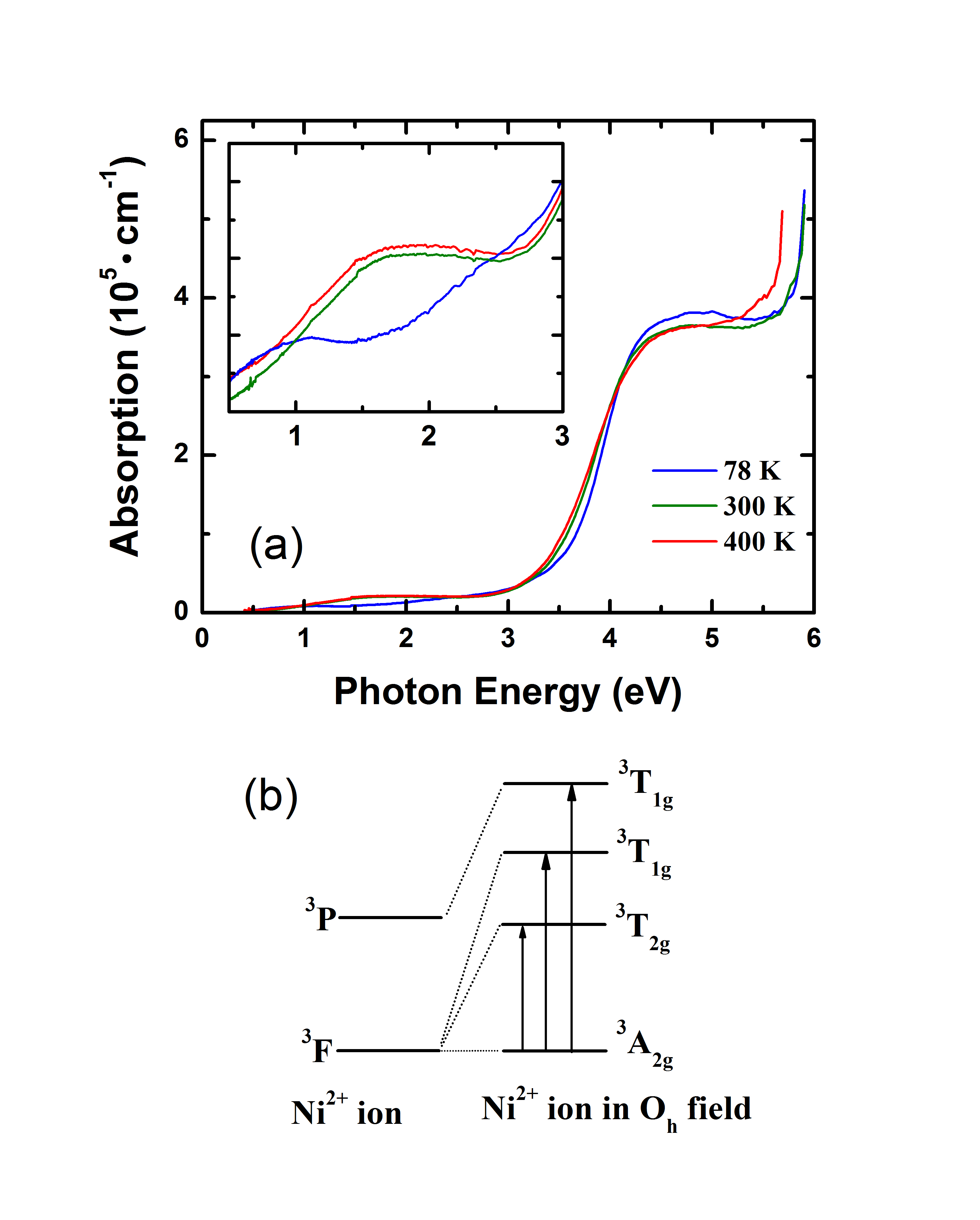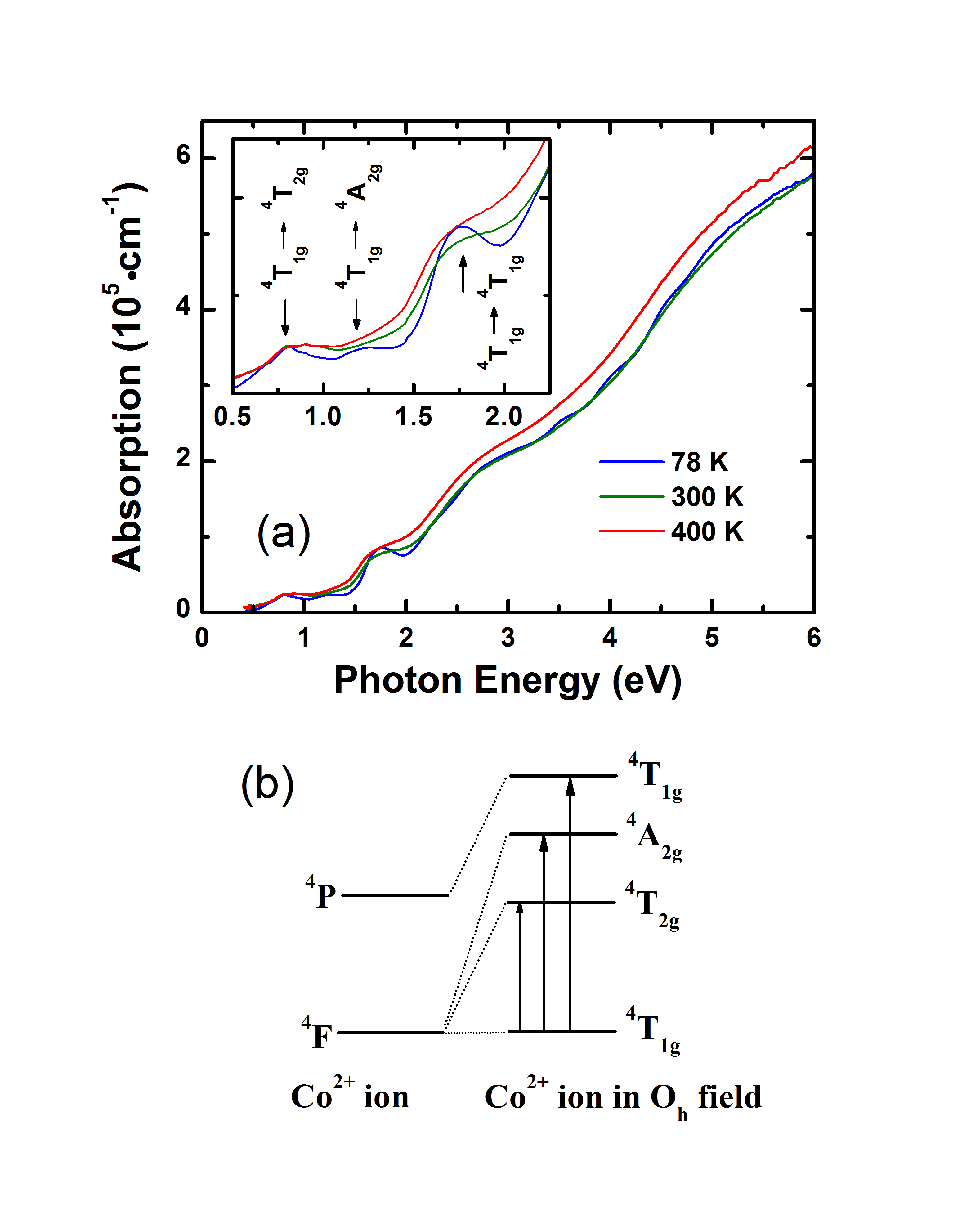Optical
and electronic properties of NiFe2O4
and CoFe2O4 thin films
Understanding the electronic structures of these ferrite
thin films is very important to improve thin film quality
as well as to enhance the physical properties, particularly
the magnetic properties for potential applications. In
the previous magnetooptical studies on NFO and CFO,the
electronic transitions between 0.5 and 5.0 eV were controversially
assigned to the inter-valence charge transfer (IVCT) and
inter-sublattice charge transfer (ISCT) transitions. The
electronic transitions between two metal ions, such as
between Co2+ and Fe3+ ions, and
between Ni2+ and Fe3+ ions are referred
to as the IVCT transitions, and the electronic transitions
between Fe3+ ions on different crystallographic sites
are referred to as the ISCT transitions.

(a) Figure shows the electronic absorption spectra
of a 120 nm NFO film on (0001) sapphire at the representative
temperatures. The spectra show a weak excitation centered
at ~1.5 eV and a strong excitation peak at ~4.5 eV.
Transmittance spectra of NFO films display high transparency
(<75%) for photon energy up to 3 eV. The inset highlights
the ~1.50 eV band, which red becomes even weaker below
175 K.
(b) Figure shows the schematic energy level diagram
for the Ni2+ (3d8) ion in an octahedral field and the
possible electronic transitions within the Ni d states.
In an octahedral crystal field, the degeneracy of Ni2+
(3d8) states is lifted, allowing 3 possible on-site
Ni d to d transitions. These three spin-allowed transitions
have weak oscillator strengths and they overlapped each
other, resulting in a single broad band.The temperature
dependence of this feature suggests that the local environment
of NiO6 changes with cooling.
(a) Figure displays the absorption spectra of a 100
nm CFO thin film at 78, 300, and 400 K, respectively.
The spectra show a typical insulating character with
three distinct low energy peaks centered at ~0.75, 1.25,
and 1.75 eV, respectively. These peaks are attributed
to spin-allowed Co2+ d to d on-site transitions, as
depicted in the energy level splitting of the Co2+ (3d7)
ion in an octahedral field (Fig. b). The electronic
excitations above 3.00 eV are attributed to the O 2p
to Fe 3d charge transfer excitations.

Conculsion:
The absorption spectra of NFO and CFO thin films show
insulating characters with the metal d to d on-site transitions
below 3 eV and the O 2p to Fe 3d charge transfer transitions
above 3 eV. The optical spectra display weak oscillator
strengths for the electronic transitions below ~3 eV,
characteristics of the spin-allowed but parity-forbidden
metal d to d on-site electronic transitions. We argue
that the previously assigned IVCT and ISCT transitions
between two metal ions in these ferrites would have very
small oscillator strengths compared to the observed metal
d to d on-site and the O 2p to Fe 3d charge transfer transitions.
Therefore, the IVCT and ISCT transitions in the absorption
spectra are ruled out in inverse spinel ferrites.
Reference: R. C. Rai et al., Appl. Phys. A
106, 207 (2012).
Top


